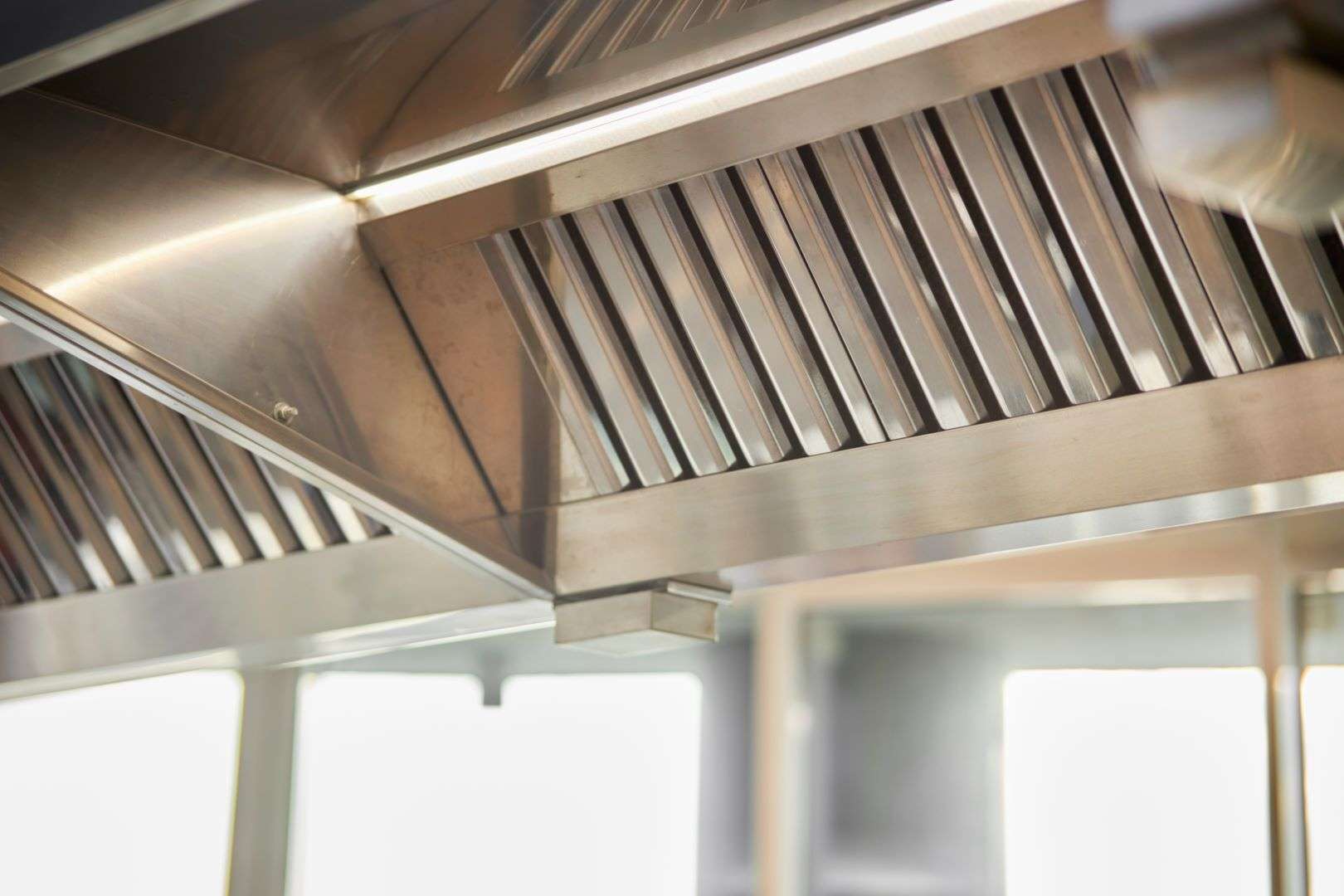How To Clean Commercial Kitchen Hood Vent – Why and How Often?
How a Kitchen Ventilation System Works
A commercial kitchen ventilation system, also known as a hood vent, plays a pivotal role in maintaining air quality and safety. The system consists of several components, including the hood, filters, ductwork, and exhaust fan. Here’s a breakdown of how it works:
- Hood: The hood is located directly above cooking equipment and captures airborne grease, smoke, steam, and heat produced during cooking.
- Filters: These trap grease and other particles, preventing them from entering the ductwork.
- Ductwork: This carries the captured air and contaminants away from the kitchen.
- Exhaust Fan: The fan expels the contaminated air outside, ensuring fresh air circulates back into the kitchen.
The system reduces heat, odors, and grease build-up, promoting a more comfortable and safe kitchen environment. However, if not cleaned regularly, these components can become clogged, reducing efficiency and posing fire hazards.
Why You Need to Clean Your Commercial Kitchen Hood
Fire Prevention
The primary reason for routine restaurant hood cleaning is to prevent fires. Grease and other flammable particles accumulate in the hood, filters, and ductwork over time. If ignited, these can cause a dangerous fire that could spread rapidly.
Improved Air Quality
A clean hood vent system ensures that smoke, steam, and cooking odors are effectively removed from the kitchen, maintaining better air quality for staff and customers.
Equipment Efficiency
Regular commercial kitchen exhaust hood cleaning ensures that the ventilation system operates efficiently. A clogged system can strain the exhaust fan, leading to higher energy costs and potential breakdowns.
Compliance with Regulations
Health and safety regulations mandate that commercial kitchens maintain clean hood vent systems. Failure to comply can result in fines, penalties, or even closure of the establishment.
Prolonged Equipment Lifespan
Routine cleaning and maintenance can extend the lifespan of your kitchen ventilation system, saving you money on repairs and replacements.
Keeping Your Restaurant Up to Code
Maintaining a clean kitchen hood vent is not just about safety; it’s also about compliance. Health and fire codes require commercial kitchens to adhere to specific cleaning schedules and standards. Here are a few key points:
Local Health Department Regulations
Health departments conduct regular inspections to ensure compliance with hygiene standards. A dirty hood vent can lead to violations and potential closure.
Fire Codes
Fire marshals inspect commercial kitchens to ensure that they meet fire safety standards. Accumulated grease in the hood system is a common fire code violation.
Insurance Requirements
Many insurance policies require proof of regular hood cleaning to maintain coverage. Failure to comply can result in denied claims in the event of a fire.
Industry Standards
Organizations like the National Fire Protection Association (NFPA) set industry standards for commercial kitchen maintenance, including specific guidelines for hood cleaning.
How Often to Schedule Routine Hood Cleaning for Restaurants?
The frequency of commercial vent hood cleaning depends on several factors, including the type and volume of cooking, the type of fuel used, and the kitchen’s operating hours. Here are some general guidelines:
High-Volume Kitchens
Kitchens that use solid fuels like wood or charcoal, or that produce a lot of grease (e.g., fast-food restaurants), should schedule hood cleaning quarterly or even monthly.
Moderate-Volume Kitchens
Kitchens with moderate grease output (e.g., casual dining) should clean their hoods every six months.
Low-Volume Kitchens
Kitchens with low grease output (e.g., schools or senior centers) can often extend cleaning to once a year.
Custom Schedule
It’s advisable to consult with a professional commercial restaurant hood cleaning service to establish a customized cleaning schedule based on your specific needs.
Restaurant Hood Cleaning Process
1. Preparation:
- Turn off all kitchen equipment and ensure the ventilation system is cool.
- Cover cooking surfaces and nearby equipment with plastic sheets to protect them from cleaning chemicals.
2. Disassembly:
- Remove and clean filters separately. Soak them in a commercial stainless steel cleaner to dissolve grease.
- Access the ductwork and exhaust fan for cleaning.
3. Cleaning:
- Apply a degreasing solution to the hood, ductwork, and fan. Use a non-abrasive scrubber to remove grease and grime.
- Rinse thoroughly with hot water to ensure all cleaning agents are removed.
- For stubborn grease, steam cleaning can be highly effective.
4. Reassembly:
- Once all components are cleaned and dried, reassemble the system.
- Ensure filters are properly reinstalled and the fan operates smoothly.
5. Final Check:
- Perform a test run to ensure the ventilation system is working correctly.
- Check for any residual grease or missed spots and clean as necessary.
Hiring Professional Cleaning Services
While regular in-house cleaning is essential, hiring a professional hood cleaning service ensures thorough cleaning and compliance with safety standards. Here’s why:
- Expertise: Professionals are trained to clean all components of the ventilation system thoroughly.
- Equipment: They use specialized tools and cleaning agents to remove stubborn grease and grime.
- Safety: Professional cleaners follow strict safety protocols to prevent accidents and ensure a thorough job.
- Documentation: They provide documentation of the cleaning, which is crucial for health inspections and insurance purposes.
Conclusion: Restaurant Hood Cleaning
Regular and thorough cleaning of your commercial kitchen hood vent is critical for maintaining a safe, efficient, and compliant kitchen. Understanding the workings of your ventilation system and adhering to a consistent cleaning schedule can prevent fires, improve air quality, and prolong the life of your equipment.
Whether you manage a high-volume fast-food restaurant or a low-volume institutional kitchen, routine cleanings by professional services like Safe Kitchens ensures that your establishment stays up to code and operates smoothly. Contact us today for hood cleaning for restaurants and other commercial restaurant cleaning services.

